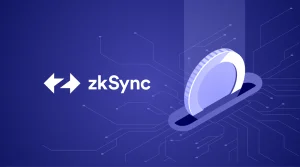As Web3’s impact spreads throughout critical industries, digital leaders need to begin preparing to reevaluate their business strategies. This calls for creative applications of blockchain technology to be investigated.The possibility of Web3 to change the internet has been the subject of many conjectures in discussions about it. One of the most contentious features of this “revolution” is the idea of a decentralised web.Blockchain technology decentralisation aims to empower users by moving away from the centralised nature of the web as it exists today. According to McKinsey, there may be a return to open standards and protocols, which would allow for the distribution of power via smart contracts and a decentralised blockchain network.Though its main engine has been the financial services sector, blockchain innovation has had a positive impact on a number of industries, including healthcare, real estate, cybersecurity, and logistics. According to McKinsey, which cited Chainalysis’s State of Web3 report, in 2022, there will be roughly USD 2 billion in daily transaction volume on decentralised finance exchanges.

The increasing popularity of digital assets, cryptocurrencies, and non-fungible tokens (NFTs) is directly related to blockchain technology’s widespread use. Blockchain is used for more than just financial transactions, despite its frequent association with finance. In this sense, any records intended to remain unchanged can be included in ledgers within a blockchain. One essential component of blockchain technology is its immutability, which makes it difficult to edit or modify. The blockchain’s transaction records create a foundation of security, auditability, and trust, which boosts confidence.

Blockchain provides a big step towards transparency for the typical business. Users can safeguard their information in personal cryptocurrency wallets by customising business applications with an emphasis on data privacy. This encourages the adoption of open standards that are valued by customers as well as providing incentives for businesses to innovate. Using blockchain as a digital ledger improves transaction accountability and auditability and is an essential component of business strategy. Remarkably, the 2022 Global Tech Trends Survey (GTTS) indicates that more than two-thirds of Asia Pacific region IT decision makers have adopted a Web3 business strategy and anticipate Web2 standards to be superseded in the next five years.






